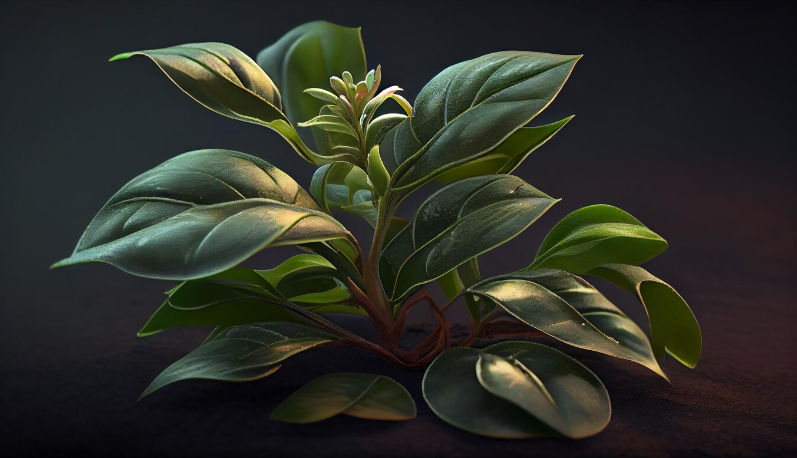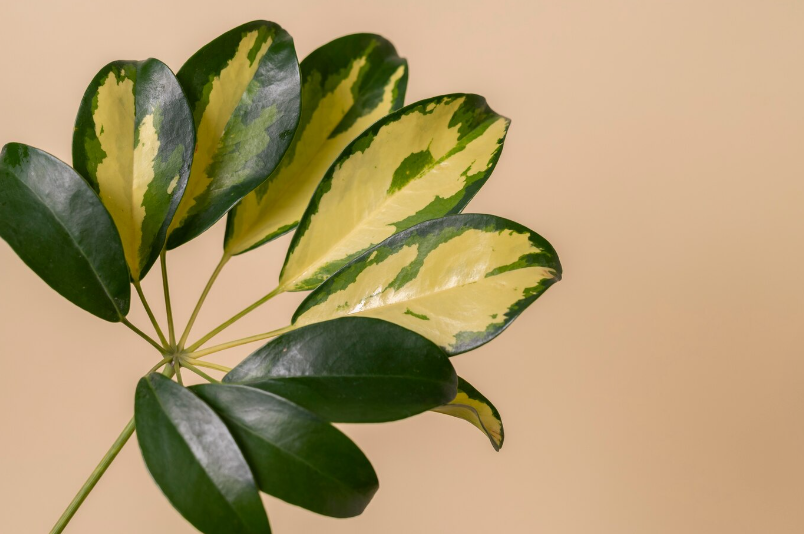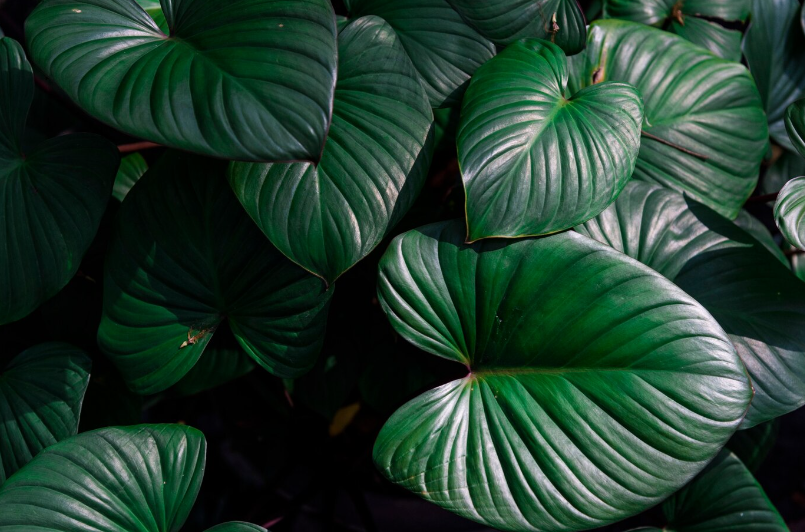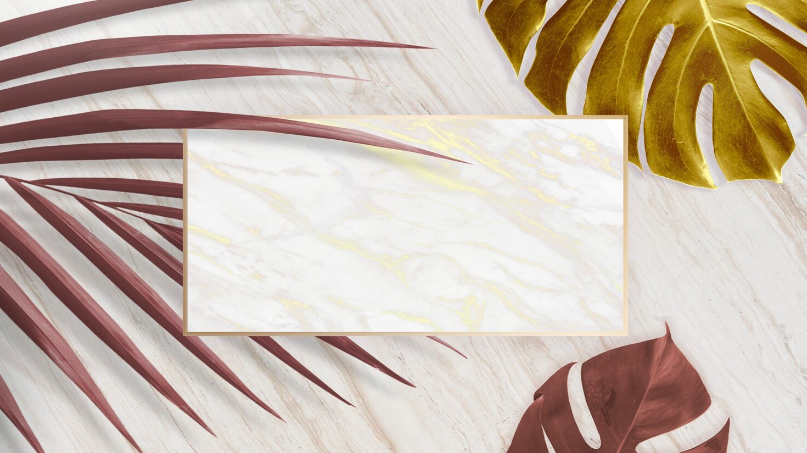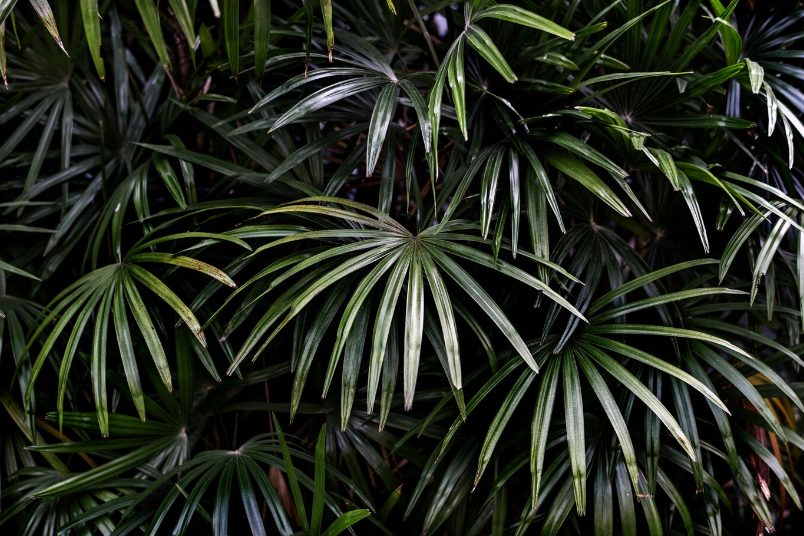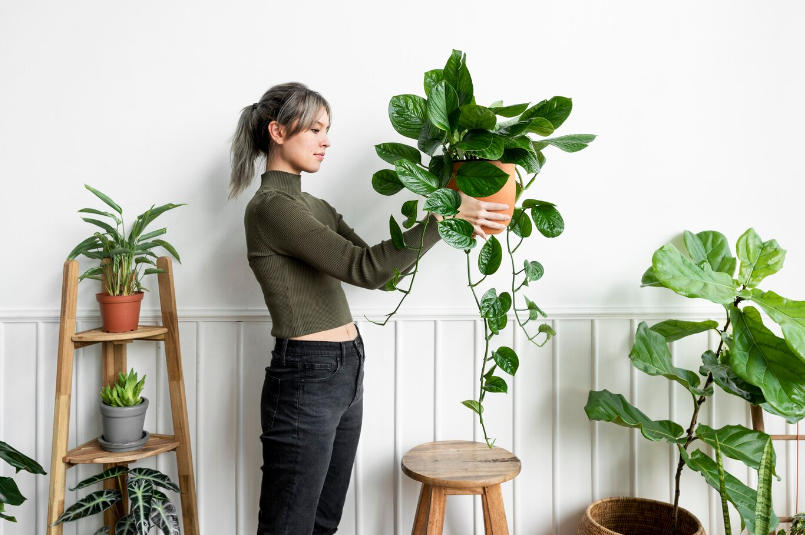Fiery and Textured Beauties: Ring of Fire and Verrucosum Philodendrons

Discover the mesmerizing world of Ring of Fire and Verrucosum Philodendrons – two captivating plant varieties that will ignite your passion for foliage.
Ring of Fire Philodendrons feature brilliant, fiery red leaves that capture the essence of nature’s most intense flames. With their vibrant hues and unique patterns, they are sure to add a touch of drama and elegance to any indoor or outdoor space.
Verrucosum Philodendrons, on the other hand, are a textured wonder to behold. Their velvety, corrugated leaves create a visually stunning display that begs to be touched and admired. The intricate patterns and distinct veining give them an air of sophistication, making them a true statement piece.
Both the Ring of Fire and Verrucosum Philodendrons are low-maintenance and easy to care for, making them perfect for both experienced plant enthusiasts and beginners alike. Their tolerance to a variety of lighting conditions and their ability to thrive in diverse environments make them versatile and adaptable additions to any plant collection.
Don’t miss your chance to own these fiery and textured beauties – bring the mesmerizing world of Ring of Fire and Verrucosum Philodendrons into your home today!
Philodendron Ring of Fire: A Fiery Wonder
Get ready to be mesmerized by the breathtaking beauty of the Philodendron Ring of Fire! With its vibrant red and orange leaves, this fiery wonder is sure to add a touch of excitement to any indoor space.
Native to the tropical forests of South America, the Philodendron Ring of Fire thrives in warm and humid conditions. It’s no wonder why it’s a favorite among plant enthusiasts! Its unique combination of fiery colors and bold textures make it a true standout.
Whether you’re a seasoned plant collector or just starting your journey into the world of indoor gardening, the Philodendron Ring of Fire is a must-have addition to your collection. Its stunning foliage will instantly brighten up any room, creating a warm and inviting atmosphere.
The Philodendron Ring of Fire is not only a visual delight, but it also has air-purifying qualities. It helps remove toxins from the air, ensuring a healthier living environment. Additionally, taking care of this plant is a breeze. With its low-maintenance nature, it’s perfect for busy individuals who want to enjoy the beauty of nature without the hassle.
So why wait? Add a touch of fiery wonder to your home with the Philodendron Ring of Fire. Its vibrant colors and captivating beauty will leave you in awe. Get yours today and experience the magic for yourself!
Philodendron Ring of Fire
The Philodendron Ring of Fire is a stunning variety of the popular Philodendron plant. With its fiery red and orange-colored leaves, it is sure to be a showstopper in any indoor or outdoor space.
This beautiful plant gets its name from the vibrant colors that resemble the flames of a roaring fire. The leaves start off as a deep green and gradually transition to shades of red, orange, and yellow. This color transformation gives the plant a unique and eye-catching appearance.
The Philodendron Ring of Fire is not only visually striking but also easy to care for. It thrives in bright indirect light and moderate humidity. It can be grown in a pot or hanging basket, making it a versatile choice for any plant lover.
This Philodendron variety is known for its texture as well. The leaves have a slightly wavy and crinkled appearance, adding another dimension to its already stunning beauty. It is a perfect choice for those looking to add a touch of exoticness to their plant collection.
Whether you are a seasoned plant enthusiast or just starting your green journey, the Philodendron Ring of Fire is sure to captivate your attention. Bring the fiery and textured beauty of this plant into your home or garden and enjoy its tropical charm all year round.
Care and Growing Conditions for Ring of Fire
The Ring of Fire Philodendron, also known as Ring of Fire Scindapsus, is a beautiful plant with vibrant foliage that adds a unique touch to any indoor space. In order to keep your Ring of Fire healthy and thriving, it is important to provide it with the right care and growing conditions.
Light: The Ring of Fire Philodendron thrives in bright, indirect light. It is best to place it near a window where it can receive filtered sunlight. Avoid placing it in direct sunlight as it can scorch the leaves.
Temperature: This plant prefers warm temperatures between 65°F and 85°F (18°C – 30°C). Protect it from drafts and drastic temperature fluctuations, as it can affect its growth and overall health.
Watering: Keep the soil evenly moist, but not soggy. Water the plant when the top inch of soil feels dry to the touch. Avoid overwatering as it can lead to root rot. Ensure good drainage by using a well-draining potting mix and a pot with drainage holes.
Humidity: The Ring of Fire Philodendron thrives in high humidity. You can increase the humidity around the plant by misting it regularly or placing a humidifier nearby. Alternatively, you can place the plant on a tray filled with water and pebbles, making sure the water level is below the bottom of the pot.
Fertilization: Feed the Ring of Fire Philodendron every 2-4 weeks during the growing season with a balanced liquid fertilizer diluted according to the package instructions. Reduce the frequency during the winter months when the plant is in its dormant period.
Pruning: Regularly prune your Ring of Fire Philodendron to maintain its shape and encourage bushier growth. Pruning also helps to remove any dead or yellowing leaves, promoting the overall health of the plant.
Potting: Repot the Ring of Fire Philodendron every 1-2 years or when its roots become overcrowded. Choose a pot that is slightly larger than its current one, using a well-draining potting mix.
By following these care and growing conditions, you can enjoy the striking beauty of the Ring of Fire Philodendron for years to come. It will be a centerpiece in your home or office space, adding a fiery and textured touch to your decor.
| Care Tips: | Growing Conditions: |
|---|---|
| Provide bright, indirect light | Optimal temperature: 65°F – 85°F (18°C – 30°C) |
| Water when top inch of soil is dry | Avoid direct sunlight |
| Increase humidity through misting or tray of water and pebbles | Use well-draining potting mix and pot with drainage holes |
| Feed every 2-4 weeks with balanced liquid fertilizer | Regular pruning to maintain shape and remove yellowing leaves |
| Repot every 1-2 years or when roots are overcrowded |
Variegation and Color Patterns in Ring of Fire
The Ring of Fire Philodendron is known for its stunning variegation and unique color patterns. The leaves of this plant feature a vibrant mix of shades, including deep greens, bright yellows, and fiery oranges, creating a captivating display of color. The variegation is not only limited to the leaf edges but also extends towards the center, creating a mesmerizing symphony of hues.
One of the most fascinating aspects of the Ring of Fire Philodendron is its ability to produce different color patterns on each leaf. While some leaves may feature bold streaks of yellow or orange, others may have intricate patterns resembling flames or waves. This natural variation in color allows each plant to have its own unique charm and makes them highly sought after by collectors and enthusiasts.
The variegation and color patterns in the Ring of Fire Philodendron are a result of its genetic makeup and environmental factors. The plant’s ability to produce such vibrant colors is enhanced by providing it with proper care, including adequate sunlight, well-draining soil, and regular fertilization.
Whether you’re a beginner or an experienced plant enthusiast, the Ring of Fire Philodendron’s variegation and color patterns will surely add a touch of beauty and uniqueness to your indoor garden. With its fiery and textured leaves, this plant is guaranteed to be the centerpiece of any space, bringing warmth and vibrancy to your home or office.
The Unique Philodendron Verrucosum
The Philodendron Verrucosum is a rare and exotic plant that is sure to capture the attention of any plant enthusiast. Its striking appearance and unique features make it a must-have addition to any indoor garden.
One of the most distinctive attributes of the Philodendron Verrucosum is its textured leaves. These leaves are covered in small bumps or warts, giving the plant a rough and intriguing texture. This texture not only adds visual interest but also provides a sensory experience for those who touch the leaves.
Another striking feature of the Philodendron Verrucosum is its vibrant foliage. The leaves of this plant are a deep, rich green color with contrasting veins that resemble fiery streaks. This fiery appearance gives the plant its nickname, “Fiery Philodendron”.
In addition to its unique appearance, the Philodendron Verrucosum is easy to care for, making it a great choice for both beginner and experienced plant owners. It thrives in bright, indirect light and prefers moist soil. With the right conditions, this plant can grow to be quite large, adding a touch of drama and beauty to any space.
Whether you’re a seasoned plant collector or just starting out, the Philodendron Verrucosum is a must-have for any plant enthusiast. Its unique texture, vibrant foliage, and easy care make it a truly special addition to any indoor garden.
What is Philodendron Verrucosum?
Philodendron Verrucosum is a unique and stunning plant that will surely captivate anyone who sees it. Native to the tropical forests of South America, particularly in Colombia, this plant is known for its dense, velvety leaves that are velvety to the touch.
The leaves of Philodendron Verrucosum have a distinct appearance, with their dark green color and luscious texture. They are heart-shaped and have prominent veins that make them stand out. The leaves also have a shiny, waxy coating that adds to their beauty.
This philodendron is a climbing plant, which means it can grow upwards with the help of its aerial roots. It can grow to impressive heights, making it a perfect choice for plant enthusiasts looking to create a vertical garden or add a touch of greenery to their space.
In addition to its aesthetic appeal, Philodendron Verrucosum offers several benefits. Like other philodendrons, it is known for its air-purifying abilities, helping to remove toxins from the air and improve air quality. This makes it an excellent choice for indoor spaces, providing both beauty and health benefits.
To care for Philodendron Verrucosum, it is important to provide it with indirect sunlight and keep its soil moist but not overly wet. It thrives in high humidity environments, making it an ideal choice for bathrooms or kitchens with adequate moisture levels.
Whether you are a seasoned plant collector or a beginner looking to add a unique and fascinating plant to your collection, Philodendron Verrucosum is a perfect choice. Its fiery and textured beauty will surely bring life and vibrancy to any space.
Rarity and Appeal of Verrucosum
The Verrucosum Philodendron, also known as Velvet Leaf Philodendron, is a unique and highly sought-after plant that stands out from others in the Philodendron family. Its name, Verrucosum, comes from the Latin word “verrucosus”, meaning “warted” or “covered in warts”. This name perfectly describes the texture of its leaves, which are covered in tiny white bumps, giving them a truly distinct and appealing appearance.
What makes the Verrucosum even more special is its rarity. This plant is native to the rainforests of South America, specifically found in countries like Brazil, Colombia, and Ecuador. Due to its limited natural habitat, finding a Verrucosum can be quite a challenge, and it is considered a prized possession among plant enthusiasts and collectors.
Aside from its unique texture and scarcity, the Verrucosum also possesses other qualities that make it highly appealing to plant lovers. This Philodendron species is known for its ability to climb and vine, making it a perfect candidate for those looking to add a touch of elegance and greenery to their homes or gardens.
In addition, the Verrucosum has impressive foliage that is both lush and vibrant. The leaves are heart-shaped and can grow quite large, reaching up to 6-8 inches in length. The deep green color, combined with the unique wart-like texture, creates a visually striking contrast that is sure to catch the eye of anyone who sees it.
Whether you are an experienced collector or a plant enthusiast looking to expand their collection, the Verrucosum Philodendron is a must-have. Its rarity, distinct appearance, and ability to thrive indoors or outdoors make it an excellent addition to any plant lover’s repertoire. Don’t miss out on the opportunity to own one of nature’s most beautiful and captivating creations!
Ideal Growing Conditions for Verrucosum
To ensure the healthy growth and stunning beauty of your Verrucosum Philodendrons, it is important to provide them with the ideal growing conditions. Here are some key factors to consider:
- Temperature: Verrucosum Philodendrons thrive in average room temperatures ranging from 65°F (18°C) to 75°F (24°C). Avoid exposing them to sudden temperature changes or extreme heat/cold.
- Light: These plants prefer bright, indirect light. Place them near a north or east-facing window where they can receive gentle morning or afternoon sunlight. Avoid exposing them to direct sunlight, as it can cause leaf burn.
- Humidity: Verrucosum Philodendrons prefer higher humidity levels, around 60% to 70%. To increase humidity, you can place the plant on a pebble tray filled with water or use a humidifier.
- Watering: These plants require moderate watering. Water them when the top inch of soil feels dry to the touch. Ensure thorough watering and allow excess water to drain completely.
- Soil: Use a well-draining potting mix that retains some moisture but does not become waterlogged. A mixture of peat moss, perlite, and orchid bark works well for Verrucosum Philodendrons.
- Fertilizer: Feed your Verrucosum Philodendrons with a balanced houseplant fertilizer once a month during the growing season (spring and summer). Follow the instructions on the fertilizer package for appropriate dosage.
- Pruning: Remove any yellow or damaged leaves regularly to maintain the overall health and appearance of your Verrucosum Philodendrons. Prune back overgrown vines to encourage new growth.
By providing your Verrucosum Philodendrons with these ideal growing conditions, you can enjoy their fiery and textured beauty for years to come.
Comparing Philodendrons and Other Houseplants
When it comes to indoor plants, philodendrons are a popular choice for many plant lovers. They are not only beautiful, but also relatively easy to care for. However, how do philodendrons compare to other houseplants? Let’s take a closer look at some key factors:
Diversity: One of the biggest advantages of philodendrons is their incredible diversity. There are over 500 different species, each with its unique features and characteristics. This means that you can find a philodendron to suit any preference or interior style. In comparison, many other houseplants have a more limited range of options.
Growth and Size: Philodendrons have a reputation for being vigorous growers. With proper care, they can grow quite large, making them excellent statement plants for spacious rooms. On the other hand, some other houseplants may have slower growth rates or stay compact and suitable for smaller spaces.
Care and Maintenance: While philodendrons are generally low-maintenance plants, they still require basic care to thrive. They prefer bright, indirect light and regular watering. Other houseplants may have different light and water requirements, so it’s essential to understand the specific needs of each plant to create an optimal growing environment.
Air Purification: Like many other houseplants, philodendrons are known for their air purifying abilities. They can effectively remove toxins from the air, contributing to a healthier indoor environment. If air purification is an important consideration for you, philodendrons are an excellent choice.
Aesthetics: Philodendrons are admired for their beautiful foliage and unique leaf shapes. From the popular Ring of Fire to the textured Verrucosum, they add a touch of elegance and visual interest to any space. While other houseplants may have their own aesthetic appeal, philodendrons have a special charm that is hard to resist.
In conclusion, while there are many wonderful houseplants to choose from, philodendrons stand out for their diversity, growth potential, air purifying properties, and captivating aesthetics. Whether you’re a seasoned plant enthusiast or a beginner, philodendrons are sure to bring beauty and joy to your indoor jungle.
Monstera vs. Philodendron: Which is Better?
Both the Monstera and Philodendron plants are incredibly popular choices among indoor plant enthusiasts. With their stunning foliage and easy-care requirements, it’s no wonder these plants have become favorites in many homes and offices.
Monstera, also known as the Swiss Cheese Plant, is characterized by its large, glossy leaves with unique holes and splits. These leaves give Monstera a bold and tropical appearance, making it a statement piece in any room. The Monstera plant is also known for its air-purifying properties, making it a great choice for improving indoor air quality.
On the other hand, Philodendrons come in a wide variety of species, each with its own unique foliage and characteristics. One popular species is the Ring of Fire Philodendron, which features vibrant red and orange leaves, creating a fiery display of color. Another popular choice is the Verrucosum Philodendron, with its textured, velvety leaves that add a touch of luxury and elegance to any space.
When it comes to care, both Monstera and Philodendrons are relatively low-maintenance plants. They thrive in bright, indirect light and require regular watering, allowing the top inch of soil to dry out between waterings. However, it’s important to note that Monstera plants are more tolerant of lower light conditions compared to Philodendrons, making them a better choice for areas with less natural light.
In terms of size, Monstera plants can grow quite large, with some varieties reaching heights of several feet or more. Philodendrons, on the other hand, tend to stay more compact and are better suited for smaller spaces or hanging baskets. This makes Philodendrons a great choice for those with limited space or who prefer a more trailing or cascading plant.
In conclusion, whether you choose a Monstera or a Philodendron, you really can’t go wrong. Both plants offer unique and beautiful foliage, are easy to care for, and can thrive in a variety of indoor environments. The choice ultimately comes down to personal preference and the specific needs of your space. So why not consider adding both of these stunning plants to your collection and enjoy the beauty they bring to your home or office?
| Monstera | Philodendron |
|---|---|
| Large, glossy leaves with unique holes and splits | Wide variety of species with unique foliage |
| Air-purifying properties | No specific air-purifying properties |
| Tolerant of lower light conditions | Requires bright, indirect light |
| Grows large, suitable for spacious areas | Stays compact, suitable for smaller spaces |
Philodendron vs. Pothos: A Detailed Comparison
Introduction:
Philodendrons and Pothos are two popular indoor plants known for their lush foliage and air-purifying properties. While they have a similar appearance, they belong to different plant families and have distinct characteristics. In this detailed comparison, we will explore the similarities and differences between Philodendrons and Pothos, helping you make an informed decision when choosing the perfect plant for your indoor space.
Growth Pattern:
Both Philodendrons and Pothos are vine plants, meaning they have the ability to climb and trail. However, Philodendrons have a more robust growth pattern, with larger leaves and thicker stems. Pothos, on the other hand, have smaller leaves and more delicate vines. Philodendrons tend to grow vertically, while Pothos prefer to spread horizontally.
Leaf Variations:
Philodendrons and Pothos exhibit a wide range of leaf variations, making them visually appealing. Philodendron leaves come in various shapes and sizes, including heart-shaped, elongated, and deeply lobed leaves. Pothos leaves are generally oval-shaped or heart-shaped, with a glossy appearance.
Light and Water Requirements:
Both Philodendrons and Pothos can tolerate a range of light conditions, including low to bright indirect light. However, Philodendrons thrive in medium to bright indirect light, while Pothos can tolerate lower light conditions. When it comes to watering, both plants prefer to dry out between waterings but should not be completely deprived of water.
Air Purification:
Both Philodendrons and Pothos are excellent air-purifying plants, removing toxins from the air and improving indoor air quality. They are known to filter out formaldehyde, xylene, toluene, and other harmful pollutants, making them ideal choices for homes and offices.
Propagation:
Both Philodendrons and Pothos are easy to propagate, making them popular choices for beginner gardeners. Philodendrons can be propagated through stem cuttings or by dividing the plant, while Pothos can be propagated through stem cuttings placed in water or soil.
Care Tips:
Here are a few care tips for Philodendrons and Pothos:
1. Provide well-draining soil to prevent waterlogging.
2. Avoid overwatering as it can lead to root rot.
3. Fertilize regularly during the growing season.
4. Keep them away from cold drafts and extreme temperature fluctuations.
Conclusion:
While both Philodendrons and Pothos are beautiful indoor plants, they have distinct characteristics that make them unique. Philodendrons offer a diverse range of leaf variations and a robust growth pattern, while Pothos have a delicate vine structure. Consider your space, lighting conditions, and care preferences to determine which plant will thrive in your home or office. Regardless of your choice, both Philodendrons and Pothos will bring beauty and freshness to your indoor environment.
The Easiest Philodendrons to Grow
Philodendrons are popular houseplants known for their attractive foliage and easy care. If you’re new to Philodendrons or just looking for low-maintenance options, consider the following varieties:
| Variety | Characteristics |
|---|---|
| Ring of Fire Philodendron | The Ring of Fire Philodendron is a great choice for beginners. It has vibrant red and green leaves that add a pop of color to any room. This variety is tolerant of a wide range of light conditions, making it adaptable to different environments. |
| Verrucosum Philodendron | The Verrucosum Philodendron is another easy-to-grow option. Its textured foliage features deep green leaves with raised veins, creating an interesting and unique appearance. This variety thrives in medium to bright indirect light and prefers slightly higher humidity. |
Both the Ring of Fire and Verrucosum Philodendrons are relatively forgiving when it comes to watering. They can tolerate occasional drying out between waterings, making them suitable for those prone to forgetting to water their plants.
With their striking foliage and low-maintenance nature, the Ring of Fire and Verrucosum Philodendrons are excellent choices for beginners or anyone looking to add some natural beauty to their space.
Insights into Rarity and Value
When it comes to houseplants, the Ring of Fire and Verrucosum Philodendrons are among the most coveted and prized specimens in the market. These fiery and textured beauties are not only stunning to look at but also offer a range of unique features that make them truly remarkable. Here, we delve into the factors that contribute to their rarity and value.
- Exquisite Visual Appeal: The vibrant colors and striking patterns of the leaves of both the Ring of Fire and Verrucosum Philodendrons make them a standout addition to any indoor garden. The contrasting shades of deep greens and fiery reds create an eye-catching display that is hard to resist.
- Rarity in the Wild: These philodendrons are native to tropical rainforests with specific habitats, making them a rare find in the wild. Factors such as deforestation and habitat destruction have further contributed to their scarcity. As a result, obtaining a healthy and well-established specimen is like owning a piece of nature’s treasure.
- Unique Leaf Texture: The velvety texture and pronounced veins on the leaves of the Ring of Fire and Verrucosum Philodendrons add depth and character to their overall appearance. Running your fingers along their leaves reveals a tactile experience that is both mesmerizing and fascinating.
- Low Maintenance Requirements: Despite their exceptional beauty, these philodendrons do not demand high levels of care. They are known to be hardy plants that can tolerate a range of light conditions and are forgiving when it comes to watering and humidity levels. This makes them an ideal choice for both experienced plant enthusiasts and beginners alike.
Overall, the Ring of Fire and Verrucosum Philodendrons are not only unique in their appearance but also valuable in terms of their rarity and resilience. Owning one of these prized specimens allows you to bring a touch of exotic beauty and elegance into your living space.
The Rarest Philodendrons
When it comes to philodendrons, there are some varieties that are considered extremely rare and highly sought after among plant collectors. These rare philodendrons are known for their unique characteristics and stunning beauty.
One such rare philodendron is the Philodendron Ring of Fire. This variety is named for its vibrant red and orange foliage, which resembles the fiery ring of flames. The Ring of Fire philodendron is a true showstopper and will definitely make a statement in any indoor or outdoor space.
Another rare philodendron that plant enthusiasts can’t get enough of is the Philodendron Verrucosum. Known for its velvety leaves with distinct textures, this philodendron adds a touch of luxury and sophistication to any plant collection. Its rich green leaves and prominent veins make it a true standout.
What sets these rare philodendrons apart is not only their striking appearance but also their limited availability. Due to their high demand and limited supply, acquiring these rare philodendrons can be quite challenging. However, their rarity only adds to their allure and makes them even more desirable.
Whether you’re a seasoned plant collector or just starting your journey, adding these rare philodendrons to your collection is sure to elevate your indoor garden and impress any plant lover. Don’t miss out on the opportunity to own these fiery and textured beauties. Grab your Ring of Fire and Verrucosum Philodendrons today!
Why Are Some Philodendrons So Expensive?
Philodendrons are known for their lush green foliage and unique leaf shapes, making them a popular choice among plant enthusiasts. However, some varieties of Philodendrons can be quite expensive compared to others. So, what makes these Philodendrons so pricey?
One reason is their rarity. Certain Philodendron species are native to specific regions or have limited natural habitats, making them difficult to find in the wild. As a result, growers have to go to great lengths to obtain these plants, which increases their cost.
Another factor is their slow growth rate. Some Philodendron varieties take years to reach a mature size, which means that growers need to invest a significant amount of time and resources to cultivate them. This slow growth rate adds to the overall expense of these plants.
The demand for certain Philodendron varieties also plays a role in their high price. Rare and unique Philodendrons have gained popularity among collectors, driving up the demand for these plants. Limited supply and high demand create a competitive market, resulting in elevated prices.
In addition, factors such as the size and condition of the plant can affect its price. Larger and more established Philodendrons tend to be more expensive than smaller or younger ones. Plants that are in excellent health and free from any pests or diseases also command higher prices.
Lastly, the intricacy of the plant’s foliage and its overall aesthetic appeal contribute to its value. Philodendrons with striking colors, patterns, or textures are highly sought after by collectors and enthusiasts, making them more expensive compared to simpler varieties.
Overall, the rarity, slow growth rate, demand, size, condition, and aesthetics are some of the factors that make certain Philodendrons more expensive than others. These factors, combined with the passion and dedication of growers, contribute to the allure and exclusivity of these fiery and textured beauties.
The Most Beautiful Varieties of Philodendron
Aside from the stunning Ring of Fire and Verrucosum Philodendrons, there are many other breathtaking varieties of these tropical plants. Each variety boasts its own unique features, making them a must-have for any plant enthusiast or interior decorator.
One such variety is the Philodendron Pink Princess. This stunning plant features vibrant pink variegated leaves, creating a truly eye-catching display. The contrasting shades of green and pink make it a perfect addition to any indoor garden or office space.
Another beautiful variety is the Philodendron Birkin. Named after the iconic fashion designer, this plant showcases bold white pinstripes running along its dark green leaves. The striking pattern resembles the design of a classic Birkin handbag, adding a touch of elegance to any room.
The Philodendron Brasil is another standout variety with its stunning green and yellow variegated foliage. The bright yellow streaks on its heart-shaped leaves add a pop of color and make it an ideal choice for adding a tropical flair to your home or office.
If you’re looking for a truly unique and rare variety, the Philodendron Micans is a fantastic choice. This plant features velvety, heart-shaped leaves in various shades of green and bronze. Its foliage has a reflective surface that gives it a shimmering, almost metallic appearance, making it a true showstopper.
Lastly, we have the Philodendron Silver Sword, known for its large, silvery leaves with a metallic sheen. This variety adds a touch of elegance and sophistication to any space, and its low-maintenance nature makes it an excellent choice for both beginner and experienced plant enthusiasts.
Whether you’re looking for vibrant colors, unique patterns, or a touch of elegance, the world of Philodendron plants has something for everyone. Explore these stunning varieties and bring the beauty of the tropics into your home or office.
Question-answer:
What is the size of the Ring of Fire and Verrucosum Philodendrons?
The Ring of Fire and Verrucosum Philodendrons are grown in a 4-inch pot, and the plant height is approximately 10-12 inches.
Do the Ring of Fire and Verrucosum Philodendrons require a lot of sunlight?
Yes, the Ring of Fire and Verrucosum Philodendrons thrive in bright indirect light. They require at least 4-6 hours of sunlight per day.
How often should I water the Ring of Fire and Verrucosum Philodendrons?
The Ring of Fire and Verrucosum Philodendrons should be watered when the top inch of soil feels dry. It is recommended to water them once every 7-10 days, allowing the excess water to drain out.
Can I keep the Ring of Fire and Verrucosum Philodendrons in a hanging basket?
Yes, the Ring of Fire and Verrucosum Philodendrons can be kept in a hanging basket. Their long trailing vines make them perfect for hanging or trailing in a pot.
Do the Ring of Fire and Verrucosum Philodendrons need any special care?
The Ring of Fire and Verrucosum Philodendrons are fairly low-maintenance plants. They prefer high humidity, so misting them regularly or placing them near a humidifier can be beneficial. Additionally, regular fertilization during the growing season can help promote healthy growth.
